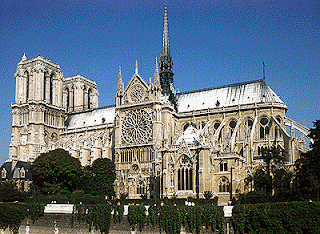I chose Abstract Expressionism and Pop: Art of the ‘50s and ‘60s because the artists in abstract expressionism applied color to let the viewer feel emotion. Pop art is interesting because it deals with everyday things in the commercial market as an art form.
Franz Kline C & O deals with the space between the viewer and the painting. The color and form gives the painting impact and ambiguity. Colors float in no define space letting your imagination take control. Kline began his abstract paintings in only black and white but later added color. The act of creating the work was as important as the final piece.
Splotches and drops of color and forms cover the canvas Mountains and Sea by Helen Frankenthaler. The forms have life of their own. This painting was the first that she laid on the ground to create it. The way she applied the paint with a rag let the color sink in like a stain and not sit on the surface of the canvas. This technique caused unique colors to appear and it gave the artist no control. Whatever happens happens. This work was the first step for her into the spiritual and traditions that molded her.
Willem de Kooning Morning: The Springs consists of marks that would be left by ice skates. The abstract forms are ones we recognize as plant shapes, light, and falling water. As de Kooning works on the piece he reduces and eliminates where he sees fit.
Jasper Johns Flag is as if we are seeing the US flag for the first time. Johns uses what is found in real world as in letters, numbers, and targets. The image is seductive and pulls you in, is a real flag or an abstract one. The painting has many layers of newspaper and paint, which has blobs and drips and the viewer, sees the many layers but can see it as a whole. It is a bold, simple, and symbolic piece.
Andy Warhol The Texan: Portrait of Robert Rauschenberg was like a son paying homage to his father. There are 28 images of Rauschenberg arranged in four lines. The feeling you get from the image is of a wanted poster. Warhol implemented the ideas but his associates executed them. He created this in his studio he called the Art Factory. The studio created 1,000 images a year. There is no individuality; Warhol creates his work so you don’t know where artificial stops and reality begins.
Roy Lichtenstein Girl with Hair Ribbon surprises and seduces you. He creates a mechanical coloring style like comic books. When we get closer to the painting the details take on a life of their own and you loose sight of the whole. The details are either dots or the white forms that between the dots. Lichtenstein used comic strips for inspiration on love and war, which stirs emotion and passion. The images use traditional ways to depict feelings by the way he draws the eyes.
The other video I chose is Andy Warhol: Images of an Image. Screenprinting is very enjoyable for me and I enjoy how he pushes the ideas. Warhol interests me because of his mind. He seemed so odd but then you wonder why he does what he does. He created Ten Lizes in 1963. It consisted of ten faces of Elizabeth Taylor but they were all the same. This idea was like an assembly line there was no distinction from the first one to the last one. The work does force the viewer to move because the white paint reflects differently and each image has a little different look. Repeating the motif causes you to feel dizzy and the image to invade everything. Warhol became an icon himself with his art, movies, and magazine. He would use a Polaroid camera and would take portraits of his friends and reproduce them as a print. He was making the celebrity a commodity, which is what society does and he was making it high art.
The in-depth discussions of paintings help to understand the abstract expressionism and pop art better. The more we see and hear about it the more the brain contains the information. Again I did not like the format of the Abstract Expressionism and Pop: Art of the ‘50s and ‘60s. It cut your attention off every time it went to a different artist. The information was good though. Andy Warhol: Images of an Image was great. I liked to see the artist view of the paintings or prints. I never knew about the Art Factory before so that just adds to my thoughts about Warhol that he very flamboyant and a little off.











































